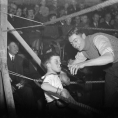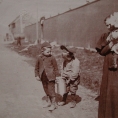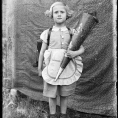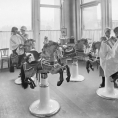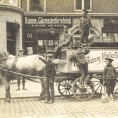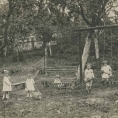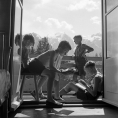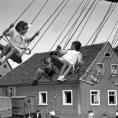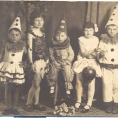Children have been a much-loved subject of pictures from very early days on, with photographers focusing on a diverse range of topics and employing various photographic genres and styles. But many of the 19th-century images featuring children have a social documentary value: photographers soon realized that the power of photography to inform and persuade could be turned to a good cause, in showing (and thereby denunciating) the harsh lives of children – a silent and often ignored group in the industrial age. Putting their circumstances on display and raising social and political awareness, could offer the much-needed leverage for concrete actions to bring about change.
Although child labor was not uncommon in pre-industrial times, it was mostly limited to helping out at the family farm or participating in cottage crafts. By the late 18th century, however, this domestic setting changed for an external working environment, as factories and mines especially set their sights on children as employees: taking advantage of their youthful energy, gaffers installed long working hours for kids and used them for the most dangerous jobs in return for the lowest pay. Many children were sole breadwinners, thus forced to keep on working in factories or gain money in whatever way possible, leaving little chance for education and ample opportunities to play.
The working-class children of the industrial age enjoyed no special status, neither in domestic context nor in public society: just another set of hands or an extra mouth to feed, they belonged to the same reality as their parents, grandparents and the rest of the household, sharing the same responsibilities. These children indeed mostly appear in solo or group portraits as adults, featuring no discerning clothes or attributes.
In middle class families, children took up a central role as well, but in quite a different way: as the family was regarded the cornerstone of society, children gave purpose and identity to all activities, household arrangements and social connections. Photographs cultivating the image of the close-knit, happy and successful family, or celebrating the high-minded romantic ideal of childhood as a time of innocence and purity, are most common in this context.
The obvious contrast between the living conditions of poor children and the idealistic middle-class notion of childhood, gave rise to the first campaigns for the legal protection of children from the 1830s onwards. Throughout the century, working hours were more and more limited, while the minimum age for employment was gradually raised. By 1901, the permissible child labor age in the UK was lifted to 12 – a milestone.
The middle and upper classes’ conception of the importance of family and the sanctity of the child, would eventually prevail and form the foundation of the modern attitude towards children. This can be witnessed in developments within children’s literature: no longer of an exclusive educational nature, children’s books from the second half of the 19th century on featured humorous, adventurous, imaginative and empathetic stories, tuned to the infant’s fantasy world.
Children were discovered as a consumer market too: accentuating childhood as a time free of worries, destined for fun and games, factory-produced dolls became available for every girl while each boy could enjoy his own cricket bat or football. Organized forms of children’s entertainment emerged as well, with Sir Baden-Powell’s Boy Scouts promoting a healthy body to fit a healthy mind. Nonetheless, the balance didn’t tip over entirely to all play and no work…: at the end of the 19th century, compulsory schooling was installed across Europe, resulting in the child’s definitive move from the foundry to the classroom.


